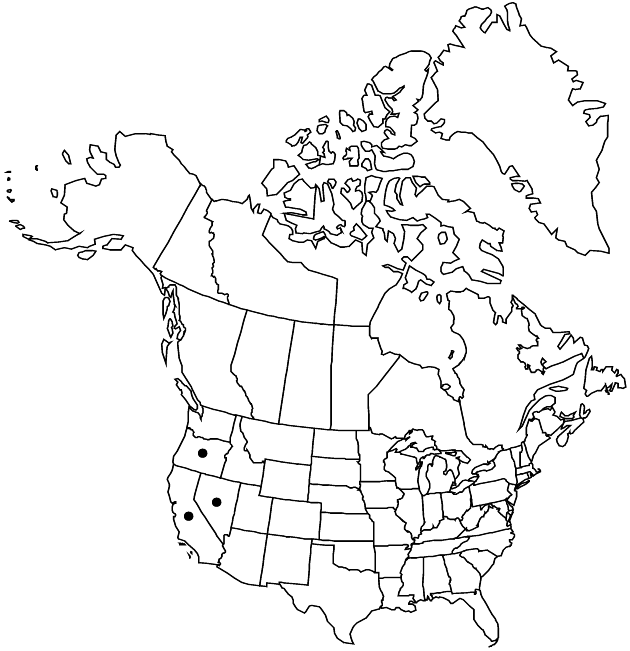familyAsteraceae
genusArtemisia
subgenusArtemisia subg. Tridentatae
speciesArtemisia cana
subspeciesArtemisia cana subsp. bolanderi
Difference between revisions of "Artemisia cana subsp. bolanderi"
Contr. Dudley Herb. 4: 192. 1953.
Common names: Bolander sagebrush
Endemic
Basionym: Artemisia bolanderi A. Gray Proc. Amer. Acad. Arts 19: 50. 1883
Synonyms: Artemisia tridentata subsp. bolanderi (A. Gray) H. M. Hall & Clements Seriphidium bolanderi (A. Gray) Y. R. Ling Seriphidium canum subsp. bolanderi (A. Gray) W. A. Weber
imported>Volume Importer |
imported>Volume Importer |
||
| Line 69: | Line 69: | ||
|publication year=1953 | |publication year=1953 | ||
|special status=Endemic | |special status=Endemic | ||
| − | |source xml=https:// | + | |source xml=https://bitbucket.org/aafc-mbb/fna-data-curation/src/2e0870ddd59836b60bcf96646a41e87ea5a5943a/coarse_grained_fna_xml/V19-20-21/V19_869.xml |
|tribe=Asteraceae tribe Anthemideae | |tribe=Asteraceae tribe Anthemideae | ||
|genus=Artemisia | |genus=Artemisia | ||
Latest revision as of 19:57, 5 November 2020
Shrubs, 50–60(–80) cm. Stems white (felty-tomentose when young). Leaves sometimes bright green, blades linear to narrowly lanceolate, (1.5–)3–4 × 0.2–0.6 cm, usually entire, sometimes with irregular lobes. Heads (2–3 per branch) in (sparsely leafy) arrays 12–18 × 1–2 cm. Involucres broadly campanulate, 3–4 × 4–5 mm. Phyllaries narrowly ovate-lanceolate, acute (outer) or obtuse, densely hairy. Florets 8–16. Cypselae 1–1.5 mm. 2n = 18, 36.
Phenology: Flowering mid–late summer.
Habitat: Gravel soils, mountain meadows, stream banks
Elevation: 1600–3300 m
Distribution

Calif., Nev., Oreg.
Discussion
Subspecies bolanderi is known only from the western United States.
Selected References
None.
Lower Taxa
None.